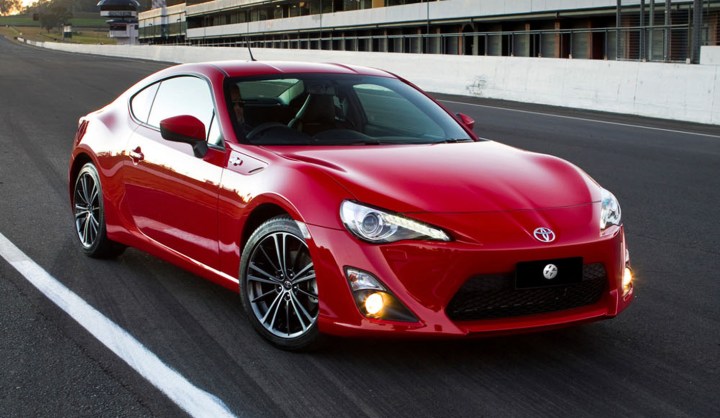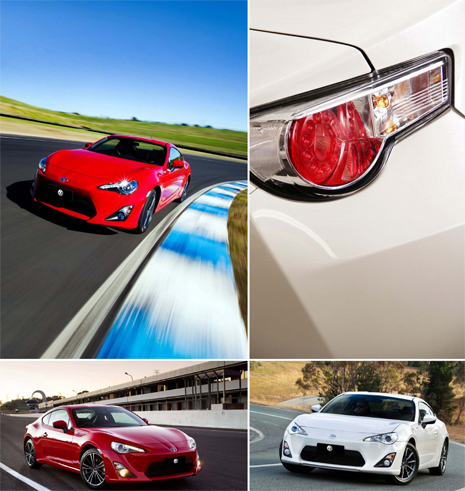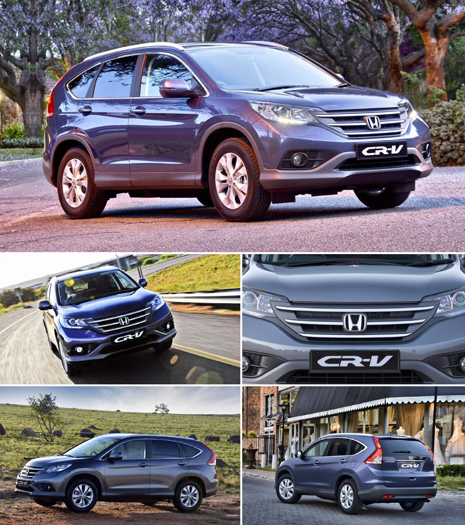Maverick Life
Toyota 86: The return of the purist sports car

Who would have expected Toyota to come up with a car that epitomises the art of driving? Much hyped ahead of its late July arrival, the oddly-named 86 sports coupé lives up to most of its promised potential, as DEON SCHOEMAN finds out during a day of hammering the two-seater along some of Mpumalanga’s best driving roads.
Let’s face it: for all its success as the world’s largest motor manufacturer, with a range of products that embraces everything from city runabouts to high-tech hybrids, the Toyota brand is not the most exciting.
Instead, it’s a nameplate with a reputation carefully constructed around the more prosaic pillars of reliability, longevity and value for money – vital elements, certainly, but hardly exciting enough to get the car buyer’s heart beating faster.
Not that Toyota is a stranger to building sporty, driver-oriented machines, though. The immortal GT2000, of which only 351 were built way back in the mid-1960s, was arguably the first (and some would argue last) no-compromise Toyota sports car.
Since then, the mid-engined MR2 models, and the more muscular Celicas and Supras, have all contributed adrenaline, excitement and aspiration to the brand. But in the 21st century context, Toyota’s passenger car line-up has lacked a true hero car.
The arrival of the 86 should come as no surprise, then, given just how tough the fight for the motoring consumer’s attentions has become. With Toyota and Volkswagen engaged in an epic battle for global sales supremacy, the Japanese automaker desperately needed a car that would put a spring in the brand’s step.
The 86 is that car: a trimmed-down, purist 2+2 sports coupé that focuses its attention on driver appeal rather than outright muscle. It’s an approach that not only promises keen dynamics and visual attractiveness, but also keeps affordability and value in the mix.

Of course, it’s a task easier said than done. Toyota needed the new sports car to be a head-turner, with compelling dynamic capabilities to match. However, there was little point in creating a direct competitor to the more exotic brands: the 86 had to bring a true sports car experience to a wider, less elitist motoring audience.
Not surprisingly, the 86 was conceptually influenced by the GT2000. Like that car, it sticks to the classic front-engined, rear-wheel drive configuration. And it’s also powered by a free-revving 2.0-litre engine, albeit not a straight-six, but an unusual (for Toyota) boxer four.
Add compact dimensions and a comparatively low kerb mass to the equation, and you have the makings of something truly memorable.
The initial impressions are promising. The 86 looks the low-slung, sleek-lined, prowling sports car part. The proportions link a swooping bonnet to a muscle-bound rump, with flared wheel arches and scalloped sides adding further visual interest.
It’s a shape that’s generic rather than bespoke, relying on the execution of the details and finishes for both brand identity and ultimate appeal.
The front is perhaps the car’s strongest visual suit, thanks to that extended bonnet, and the way it culminates in a larger than expected air intake. The latter endows the 86 with an aggressive, hungry visage. Tapered cooling ducts on either side also provide a home for the fog lamps, while the slanted headlights incorporate daytime running lights.
The long bonnet’s vast expanse of weight-saving aluminium is garnished with a style line that embraces the Toyota logo, while unusual bulges above each wheel position add some welcome edginess, while also creating a visual reference point to the car’s extremities when seated in the cockpit.
The rear is fussier, with too many divergent elements. Of note is the combined reverse/fog light cluster, centrally located above the integrated, charcoal-hued diffuser. Two large-diameter exhausts add a further sense of intent.
The fact that the diameter of those pipes is exactly 86 mm is no coincidence, and is one of the many subtle allusions to the coupé’s 86 moniker.
To their credit, the 86’s designers have steered clear of the almost obligatory boot spoiler, but in profile, the boot lid’s complex shape and extended surface area does seem to suggest a certain aerodynamic functionality.
The overall impression is purposeful and unmistakably athletic, assisted by the relatively long wheelbase, and the low, wide stance.

With so much emphasis on dynamic intent, one can’t help but take a peak under the bonnet before actually experiencing the Toyota’s performance capabilities. And those who managed to escape the car’s extensive pre-release publicity campaign may be surprised to find that a flat-four ‘boxer’ engine provides the 86’s motive urge.
The 2.0-litre unit is the work of Subaru, which also produces its own version of the 86, badged the BRZ. In the 86, the engine is equipped with Toyota’s own electronics and management system, however.
Subaru has made an art of horizontally opposed engine design, and the four-potter’s specs suggest that it’s a good match for the 86’s requirements. And here’s another anorak fact: the engine’s bore and stroke reveal an all-square arrangement of – wait for it – 86 mm x 86 mm.
The factory figures promise a maximum output of 147kW at a screaming 7,000 rpm from the normally aspirated unit, with the torque maximum of 205Nm achieved at an equally peaky 6,400 rpm.
Admittedly, neither statistic suggests the kind of rip-roaring performance the 86’s rakish presence would allude to. But then, the Toyota’s kerb mass of just 1,260kg still allows a useful 118kW/ton power-to-weight ratio.
More importantly, the engine’s peaky character compels full use of the six-speed manual gearbox – and as it turns out, the close-ratio box is one of the 86’s greatest assets, because it is an absolute blast to use.
Thus, engine and gearbox conspire to provide Toyota’s new driving machine with just the right motive urge, while the fact that the available muscle is channelled to the rear wheels is a further, welcome acknowledgement of classic sports car tradition.
If the combination of streamlined styling, an enthusiastic powertrain and low weight suggests a credible sports car package, then the 86’s cockpit underlines that intention even before the first turn of the wheel.
Wide-opening doors allow easy access to a pair of low-mounted, emphatically bolstered bucket seats, trimmed in a mix of cloth and leather. The driver’s view of the deeply recessed instrument dials is framed by a simple, three-spoke steering wheel: no flat-bottomed rim, no multifunction switchgear.
The instrument array is dominated by a large, analogue rev counter, flanked on the left by a smaller speedometer, and on the right by gauges for fuel level and engine temperature. The focus on the rev counter makes sense once you experience just how easy it is to push the engine into the red. A shift light indicator assists in ensuring that cog swaps are timeously executed.
Soft-touch plastics and faux carbon fibre surfaces add to the purposeful ambience of the cockpit, as does the switchgear array for the climate control system. But the sound system’s control panel and display looks no better than what you’d find in a current-generation Corolla, even though it sounds decent, and will also accommodate USB sticks and iPods.
Toyota persists in calling the 86 a four-seater, but this is a 2+2 at best, and even then, the rear perches are for midgets or Yorkshire terriers only. Indeed, the bench seat is best used for extra luggage space, as the boot isn’t the biggest, especially since SA-spec cars get a full-sized spare wheel.
Okay, so by now you’re champing at the bit to find out what the 86 is like to drive – and the short answer is that it’s great. Yes, truly great, because it gets the one thing right so many wannabe sports cars (even many really expensive ones) struggle with: steering response.

Despite its electric assistance, the steering feels meaty and progressive, with plenty of heft. Turn-in is on the keen side of crisp, so that the initial transition feels almost too sharp, especially in really fast sweeps.
The 86 is content to stick to the chosen line, but in the tight, inducing some tail-wide oversteer isn’t difficult – and if you switch off the stability control, throttle-steering the Toyota with rump running wide is thrillingly controllable.
Most of all, however, it’s the close dialogue between the 86 and its pilot that commands the real respect. This Toyota has an almost uncanny ability to communicate its intentions, allowing the driver to respond pre-emptively and precisely to the car’s feedback.
The result is a coupé that becomes an extension of its pilot’s thoughts: it’s a car that you think, rather than drive, through the curves and corners of a mountain pass, with man and machine sharing an uncanny unity of purpose from apex to apex.
The ride quality is good for a car in this category: taut and composed, with a reassuring, almost Teutonic solidity, but without losing sight of the need for compliant damping. There’s no jarring of teeth, here – only an honest translation of road conditions, with the worst irregularities smoothed out just enough to ensure long-distance comfort.
And therein lies the real secret of the 86: it’s by no means fast in real sports car terms, but what it lacks in straight-line brio, it makes up for with the kind of ride and handling that many an exotic machine simply cannot emulate.
The 0-100 km/h sprint time is a respectable 7,6 seconds, while the 226 km/h is adequate, but largely academic.
More important is the 86’s ability to involve and entertain. In this car, it’s no hardship to make frequent use of the short-throw gearshift, to chase the engine revs into the power band at every opportunity, and to revel in the forgotten thrill of heel-and-toe downshifts.
With a chassis this good, it would be hard to believe that Toyota won’t be offering more powerful versions of the 86 in the future, and to some extent, the coupé cries out for more muscle. But I fear that more power would disturb the car’s quintessential poise and finesse.
The 86 makes some very important statements. It proves that power is not the only requirement for sports car appeal, and that chassis and steering are the true parameters distinguishing a real driving machine from mere muscle machines.
In that sense, the Toyota 86 lives up to all the hype, and emerges as a classic in the making. However, I fear that many a would-be buyer would rather have more power and more torque – especially at Reef altitudes.
Does that mean that the 86’s purist qualities will go largely unrecognised? I hope not! DM
|
Toyota 86 2.0 High Manual
|



















 Become an Insider
Become an Insider